Jackson Pollock (1912-1956)
We Perform Jackson Pollock art authentication. Jackson Pollock appraisal. Jackson Pollock certificates of authenticity (COA). Jackson Pollock analysis, research, scientific tests, full art authentications. We will help you sell your Jackson Pollock or we will sell it for you.
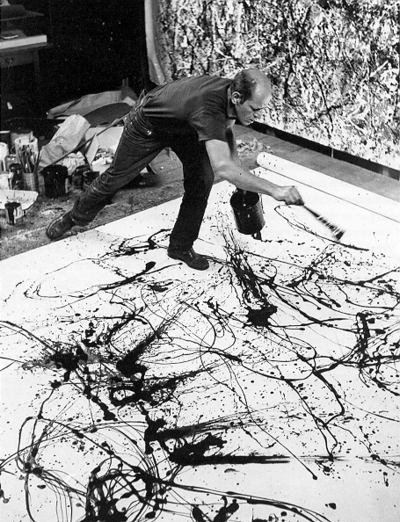
The Pollock Foundation no longer authenticates works by the artist. Nor are its archives open to the general public. Art Certification Experts has over a decade of experience researching and analyzing works by Pollock. We have access to incomparable archival and library resources on Pollock. Please contact us for more information.
Jackson Pollock (1912-56) was a painter, printmaker, and sculptor. Pollock was born into poverty in Cody, Wyoming. His family moved nine times throughout the West during his childhood. As a child he lived for a long time in Phoenix, Arizona where he was exposed to art of the Pima and Maricopa tribes. One family that lived close to the Pollocks in Phoenix was Japanese. Through them, Pollock saw his first Asian art.
Pollock was suspended from every school he attended. At Manual Arts High School in Los Angeles a teacher sparked his interest in art, but Pollock was ultimately expelled and never graduated. He met fellow artist Philip Guston (1913-80, painter and printmaker) at Manual Arts, who was also expelled for bad behavior. In high school, Pollock was exposed to various forms of American mysticism, including Theosophy.
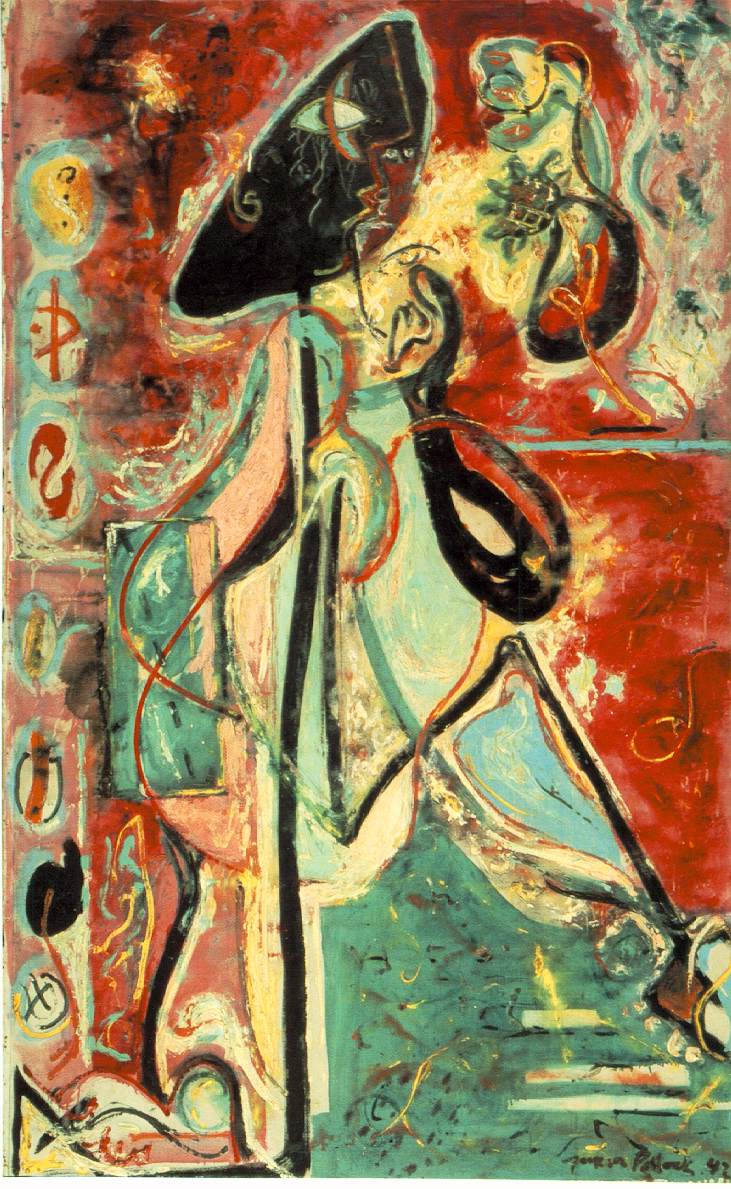
In about September 1930, Pollock moved to New York to join his brothers on the East Coast. His brothers Charles and Sande were also artists. After moving to New York, Pollock dropped his original first name Paul. He studied with Thomas Hart Benton at the Art Students League in New York. Benton was anti-modernist and emphasized expression of the collective American experience. During this time Pollock was strongly influenced by Alfred Pinkham Ryder’s depictions of the American West. He was also interested in the paintings of el Greco. In 1936 he studied with the radical leftist Mexican muralist David Alfaro Siqueiros, who taught him unconventional painting techniques, such as the use of carved surfaces and unusual pigments.
Pollock produced murals for a federal art project from 1935 to 1942. Throughout this period he engaged in binge drinking and suffered psychological breakdowns, during which he often disappeared. He was admitted to several mental hospitals as a charity case. He had Jungian therapists who encouraged Pollock’s interest in surrealism and primitivism. During this time, he was deeply affected by works by Masson and Joan Miró, as well as works by Pablo Picasso and José Clement Orozco.
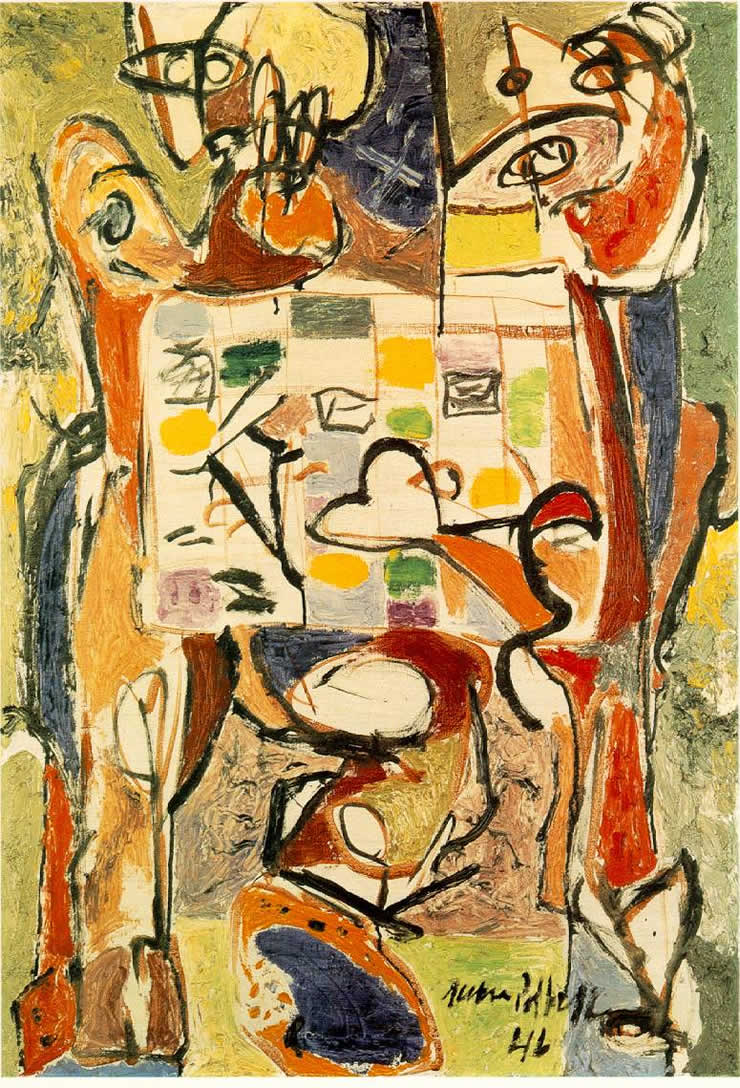
After meeting artists John Graham and Lee Krasner in about 1940, Pollock got his first exhibits. He had his first important gallery show in January 1942. Peggy Guggenheim put Pollock on a stipend to produce art for her gallery. The Guggenheim contract meant that Pollock no longer had to take janitorial and other odd jobs to put food on the table. Pollock’s first solo show was at Guggenheim’s gallery in 1943. The show provoked great interest in the press and the New York art world. It was reviewed in the New York Times, New Yorker, Partisan Review, Art News, Nation, among others. The critic Clement Greenberg was a frequent, eloquent supporter of Pollock’s work. Yet there were not many sales.
In 1945, Pollock married Lee Krasner. Not long afterward, they left Manhattan for the eastern tip of Long Island. In summer 1946, Pollock began painting on the floor. In late 1946 or 1947, Pollock began his drip paintings. Other artists, such as James Whistler, Hans Hofmann, Max Ernst, and Andre Masson had used dripping but as a limited technique. In the words of his contemporary and sometimes friend Willem de Kooning, Pollock “broke the ice.” The period from 1947 to 1951 was the only one in which Pollock produced paintings without human or animal figures.
This was the period during which he became the most famous artist, indeed the first celebrity artist, in America. He was featured in Life magazine, photographed by Hans Namuth, Rudy Burckhardt, and Arnold Newman. Namuth made a film of Pollock painting. The movie of Pollock moving gracefully around the canvas helped to give credence to the art critic Harold Rosenberg’s suggestion that Abstract Expressionism was not painting but a “series of acts.”
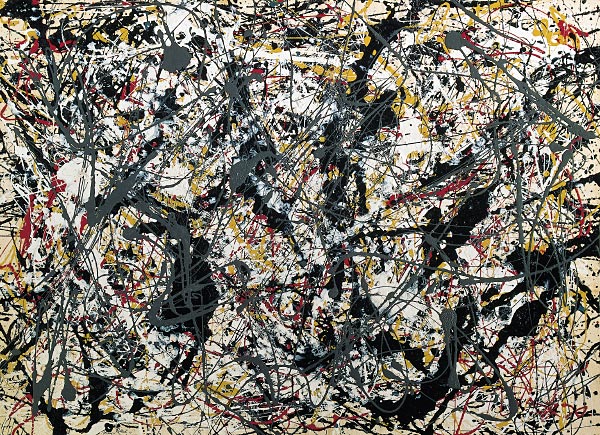
Pollock started exhibiting at Betty Parson’s gallery in New York at about this time. His paintings did not sell, though the openings were crowded. In 1950, after Namuth finished the film, Pollock returned to binge drinking after a two-year reprieve. A friend, collector, and artist Alfonso Ossorio moved close to the Pollocks on Long Island and acted as Pollock’s agent in some matters. In 1952, Pollock signed on with Sidney Janis Gallery. Some of the work from this period is painted with a brush as well as dripped or poured.
In 1954, Pollock created only a few works; by early 1955 he stopped painting. He died in a car accident in August 1956. Shortly before his death, Time magazine termed him “Jack the Dripper.”
Art Certification Experts is eager to help you authenticate and appraise any work by Jackson Pollock. Please contact us as [email protected].
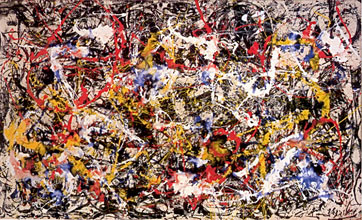
Reviews
1,217 global ratings
5 Star
4 Star
3 Star
2 Star
1 Star
Your evaluation is very important to us. Thank you.
